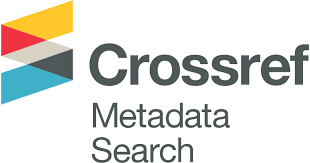إعداد أدوات لتشخيص صعوبات القراءة والكتابة باللغة العربية: التطوير والصديق والتقنين
DOI:
https://doi.org/10.70443/jaaal.v20i2.295الكلمات المفتاحية:
أدوات تشخيصية، عسر القراءة والكتابة، اللغة العربية، الاضطراب الفونولوجي، صدق الاختبار، المعايير العاديةالملخص
يتناول هذا البحث تطور الأدوات التشخيصية لصعوبات القراءة والكتابة لدى الأطفال، مع التركيز على تطورها ومدى صدقها وعملية تقنينها. وقد أسهمت التطورات الحديثة في فهم الآليات الكامنة وراء هذه الصعوبات في تطوير أدوات أكثر حساسية ودقة. تُعد عملية التحقق من صدق هذه الأدوات أمرًا ضروريًا لضمان دقتها ومصداقيتها. كما أن عملية التقنين التي تعتمد على عينات ممثلة تُوفر معايير مرجعية تُسهم في التفسير السليم للنتائج. ويهدف هذا النهج المتكامل إلى تحسين دقة التشخيص، مما يُسهل تطبيق تدخلات مخصصة لدعم الأطفال الذين يعانون من هذه الصعوبات.
التنزيلات
المراجع
Alhamami, M., Alduais, A., Alasmari, M., & Qasem, F. (2024). Development and validation of the Arabic children’s strong communication scale: a pilot study. Front. Psychol., 15. doi: 10.3389/fpsyg.2024.1380296 DOI: https://doi.org/10.3389/fpsyg.2024.1380296
Azzam, R. (1993). The nature of Arabic reading and spelling errors of young children. Reading and Writing, 5, 355–385. DOI: https://doi.org/10.1007/BF01043112
Boukhraz A, & Belkadi N, (2021). Dysgraphia, Terms and Categories – Analytical Descriptive Study. phonetic, 17(2), 245-264.
Elbeheri, G., Everatt, J., Reid, G., & al Mannai, H. (2006). Dyslexia assessment in Arabic. Journal of Research in Special Educational Needs, 6(3), 143–152. https://doi.org/10.1111/j.1471-3802.2006.00072.x DOI: https://doi.org/10.1111/j.1471-3802.2006.00072.x
Everatt, J., Smythe, I., Adams, E., & Ocampo, D. (2000). ‘Dyslexia screening measures and bilingualism. Dyslexia, 6, 42–56. DOI: https://doi.org/10.1002/(SICI)1099-0909(200001/03)6:1<42::AID-DYS157>3.0.CO;2-0
Gauthier, L., Dehaut, F., & Joanette, Y. (1989). The Bells Test: A quantitative and qualitative test for visual neglect. International Journal of Clinical Neuropsychology, 11(2), 49–54. DOI: https://doi.org/10.1037/t28075-000
Haitham, T. (2013, April). Reading and Spelling in Arabic: Linguistic and Orthographic Complexity. 2013Theory and Practice in Language Studies, 3(5), 721-727. DOI: https://doi.org/10.4304/tpls.3.5.721-727
International Dyslexia Association (IDA). (2002). Dyslexia Basics. International Dyslexia Association. Retrieved from https://dyslexiaida.org
Miller, L., & Larkin, R. (2009). The Dyslexic Adult: Interventions, Diagnosis, and Treatment. Wiley-Blackwell.
Shaywitz, S. E., Shaywitz, B. A., & Pugh, K. R. (2008). Dyslexia and the Brain: What Does Current Research Tell Us? Science, 325(5938), 1103-1107. https://doi.org/10.1126/science.1171996
Snowling, M. J. (2000). Dyslexia. Blackwell Publishing.
Sutaman, S., & Suci Ramadhanti , F. (2021). Optimizing arabic speaking skills based on integration of learning theory framework in higher education. arabiyat Journal Pendidikan Bahasa Arab dan Kebahasaaraban, 8(1), 75-89. DOI: https://doi.org/10.15408/a.v8i1.20423
Taghlit S. (2008). Dyslexia and Dysgraphia: A Descriptive Analytical Study. Journal of Arts and Social Sciences,6, 119-151. DOI: https://doi.org/10.4324/9780203938904-16
التنزيلات
منشور
إصدار
القسم
الرخصة
الحقوق الفكرية (c) 2024 المؤلفون

هذا العمل مرخص بموجب Creative Commons Attribution-NonCommercial 4.0 International License.













 مجلة المجمع الجزائري للغة العربية تصدر عن
مجلة المجمع الجزائري للغة العربية تصدر عن